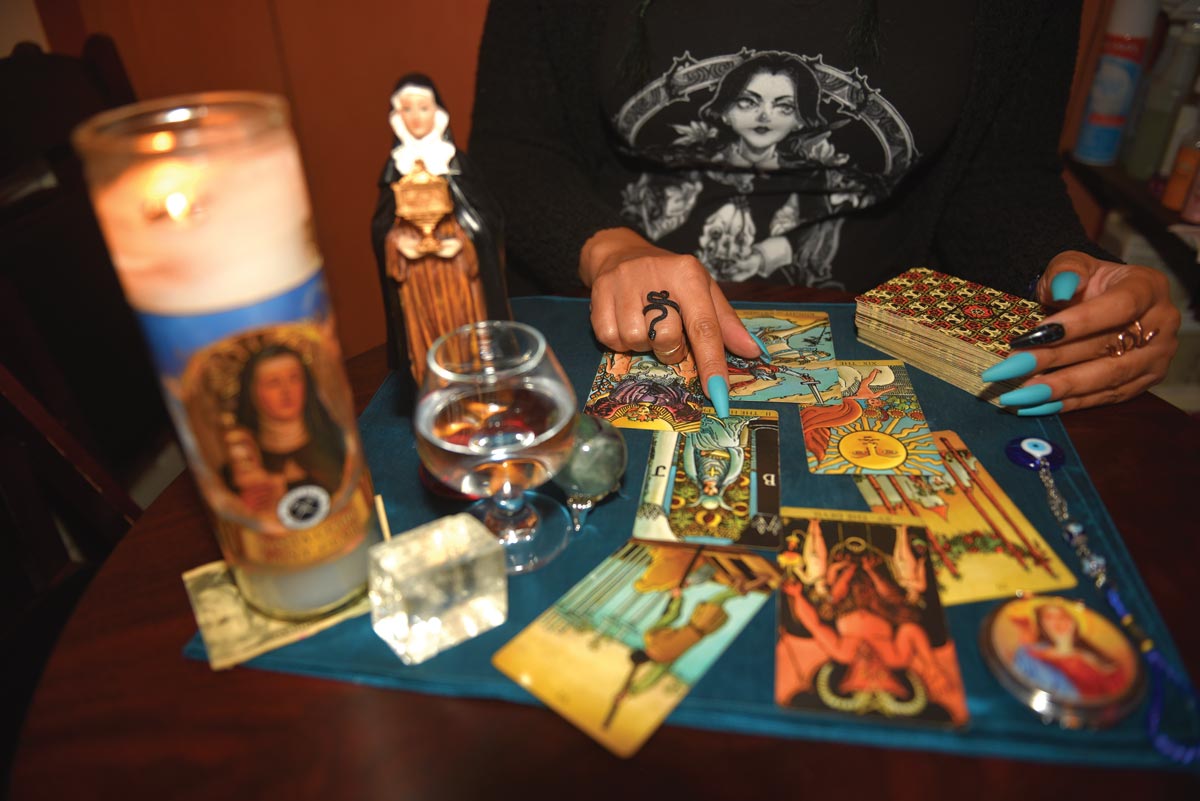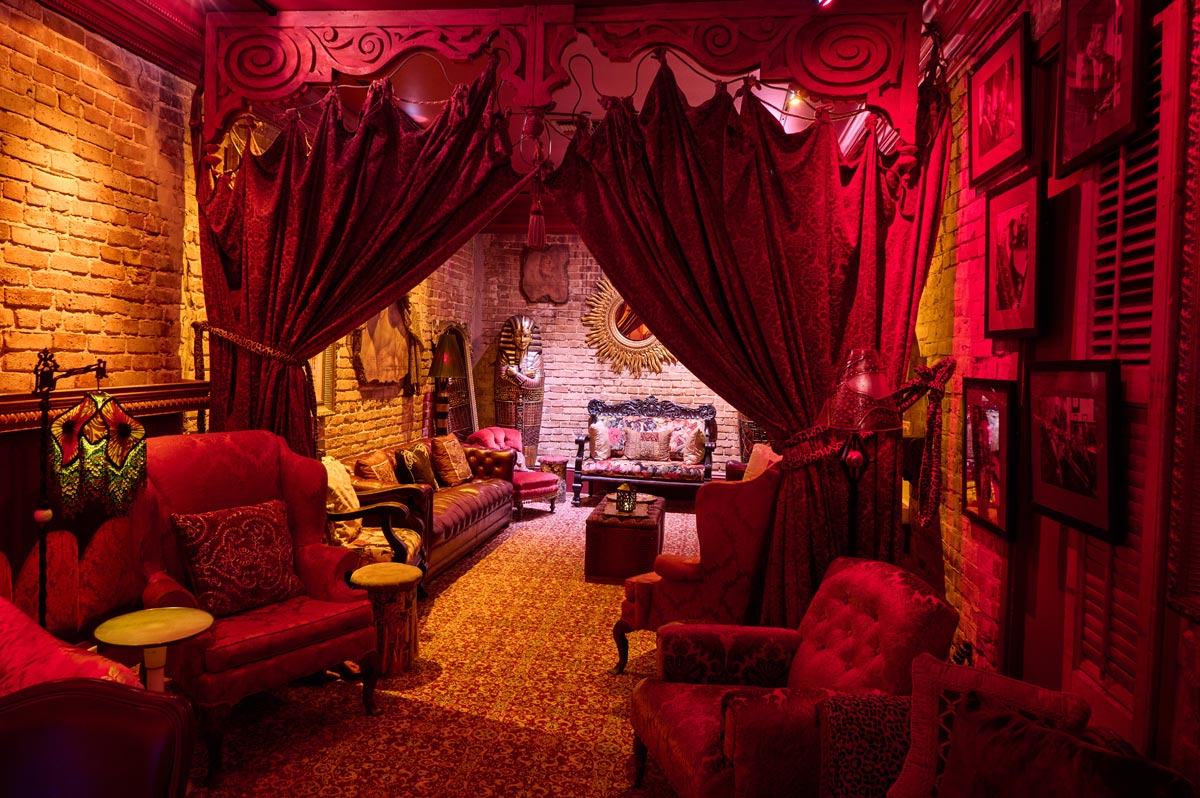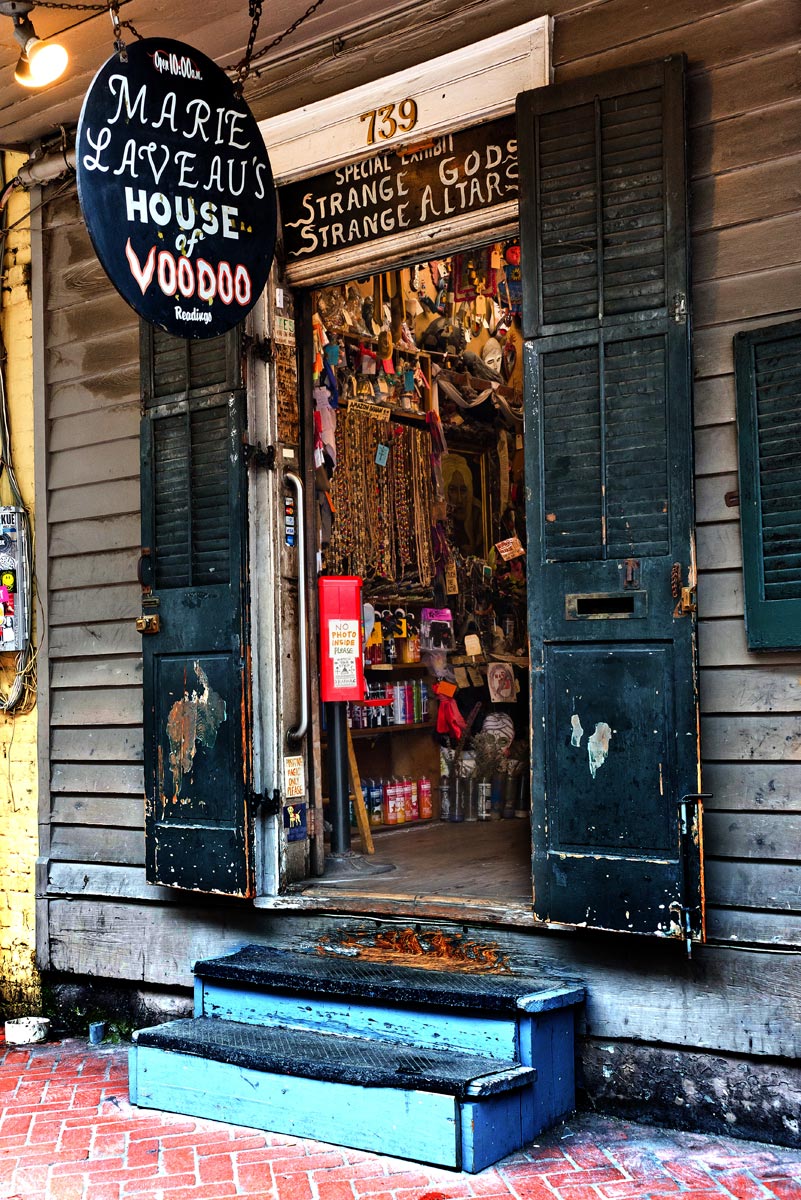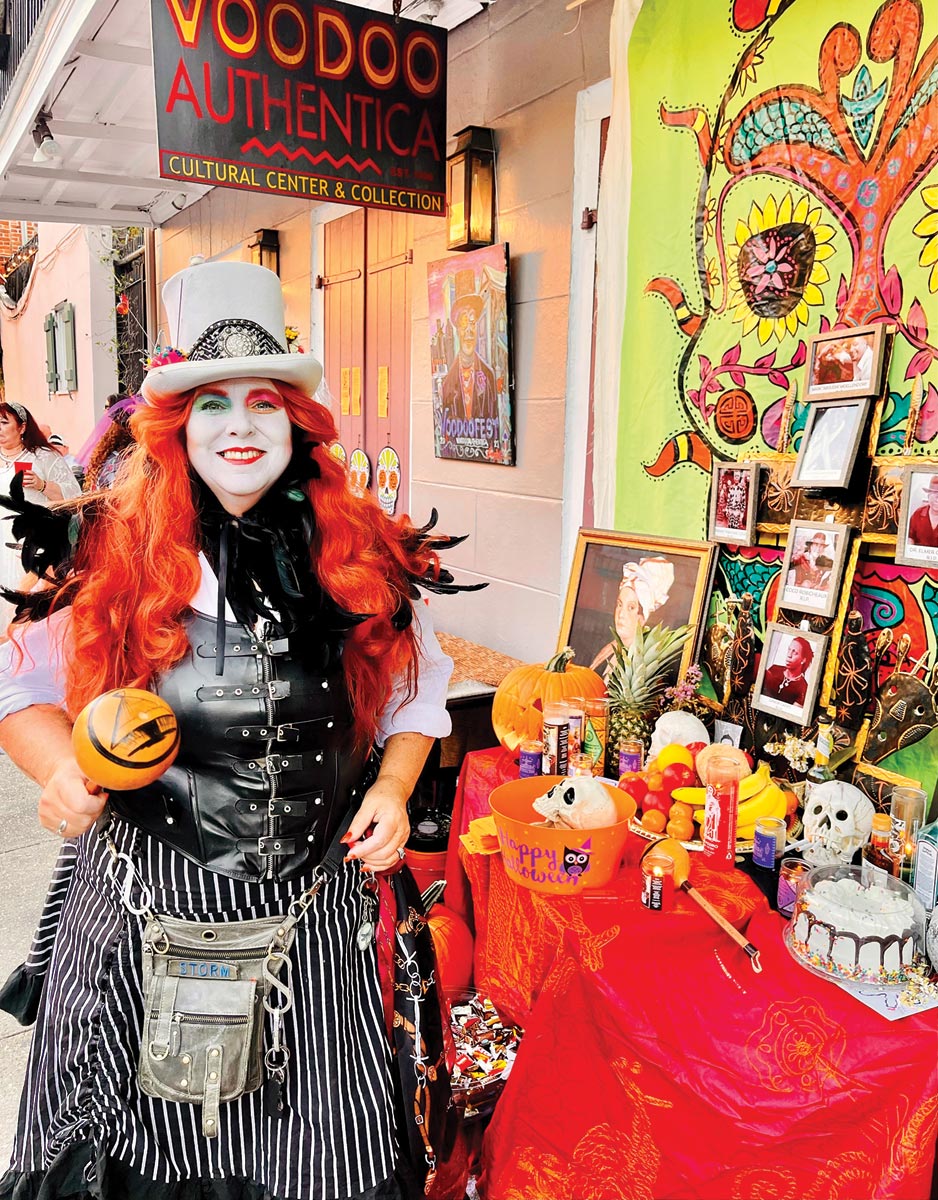August 22, 2025
New Orleans, Louisiana, is a city steeped in history, culture, and a sense of the supernatural. Known for its vibrant music scene, delicious cuisine, and unique architecture, it also boasts a rich array of ghostly tales, folklore about vampires and werewolves, and the mysticism of voodoo. A haunted ambiance hangs heavy in the air, intertwining the city's cultural heritage with its spectral legends.
The city’s tumultuous past, marked by numerous conflicts and tragedies, has contributed to an abundance of ghost stories that echo through its streets. These narratives are as diverse as our population. Many of these tales are rooted in the history of the local cemeteries, where above-ground tombs—a necessity in the flood-prone area—house the remains of the deceased. Notably, the St. Louis Cemetery No. 1 is reputed to be one of the most haunted sites in the city. Here lies the infamous Marie Laveau, the Voodoo Queen of New Orleans, whose spirit is said to still roam the cemetery, granting wishes to those who pay their respects.
Nothing embodies the mystical nature of New Orleans more than voodoo. Often misunderstood and sensationalized, voodoo practices represent a complex belief system rooted in African traditions blended with Catholicism, indigenous beliefs, and other cultural influences. Voodoo is fundamentally about connection between the living and the spiritual, the seen and the unseen.
Marie Laveau stands at the pinnacle of New Orleans voodoo lore. She was not only a practitioner but also a community leader, healer and a powerful force within the city. Her legendary status has immortalized her in various facets of New Orleans culture. Voodoo shops abound throughout the city, offering mystical items such as gris-gris bags, candles, and potions, allowing practitioners an avenue to connect with their spirituality. Laveau performed her services in three main places: her own home on St. Ann Street, within Congo Square, and at Lake Pontchartrain. Although there were a few others before her, Marie Laveau has earned the title of Voodoo Queen of New Orleans.
One of the best places to visit to learn more about Laveau and Voodoo is Voodoo Authentica™ of New Orleans Cultural Center & Collection. This place is a practitioner-owned and operated establishment, founded in 1996 located at 612 rue Dumaine in the historic French Quarter. At their shop, they provide a complete line of locally handmade Voodoo Dolls, Gris Gris Bags, Potion Oils, and other unique New Orleanian, Haitian, and African Spiritual Arts & Crafts; as well as offer Rituals, Readings, Spiritual Work and Consultations performed by their experienced team of In-House Spiritualists. On Halloween they also present Voodoofest which is their free annual festival, which celebrates the Voodoo religion's many important contributions to New Orleans' traditions. They have activities all day that include Educational & Cultural Presentations, Book Signings, Practitioner-Made Potion Oils & Gris Gris Bags, and an Ancestral Ritual.
Moving into the ghostly realm, numerous ghost tours such as French Quarter Phantoms Ghost Tour lead visitors through the French Quarter, showcasing sites like the Lalaurie Mansion. Formerly owned by the notorious socialite Madame Delphine Lalaurie, the mansion holds a dark legacy of cruelty, where slaves were reportedly subjected to horrifying treatments. Terrible atrocities occurred in the early 1830s at the corner of Royal and Governor Nichols streets. On April 10, 1834, the truly devious happenings in the abode came to light when a fire broke out in the Lalaurie residence. As rumor has it, the blaze was started by a 70-year-old slave woman who was chained to the stove by Lalaurie. She told authorities she was trying to commit suicide for fear of being punished and brought to the attic where people go and never return. When people attempted to enter the house the following day to ensure that everyone had been evacuated, they were refused the keys by the Lalauries. Finally breaking down the door, bystanders found several slaves mutilated and brutalized for months. Before the fire, there was already a record of 12 slave deaths at the mansion. When the discovery of the abused slaves became widely known, a mob of local citizens attacked the Lalaurie residence and destroyed everything. Lalaurie escaped into the night boarding a schooner bound for Mobile, Alabama and then to Paris. She never came back to New Orleans. It is said, the souls of the tortured slaves are still present in the house. This house was even more famous, in the last few years, when purchased by actor Nicolas Cage and immortalized on the small screen in American Horror Story Coven with Kathy Bates playing the notorious Madame Lalaurie.
One very haunted hotel is The Olivier House. The guest list of this quaint little hotel extends not only to the living. Several spirits tend to linger around such as a Confederate soldier and two of the previous owners, Mrs. Olivier and Ms. Locoul. The sightings of the soldier are few and far between but the apparitions of the two elderly women are the most commonly witnessed. They are normally seen wandering through the hotel, dressed in Antebellum-styled dresses. If you happen to stay at the Olivier House hotel, request either room 104, 106, or 216, as they are said to be the most haunted.
Even the city’s restaurants are not immune from the spirit world. Have dinner at one of our many haunted restaurants. Arnaud’s Restaurant, founded in 1918, has a spooky diner. Count Arnaud, the former owner of the restaurant who passed away in 1948, supposedly haunts the famous eatery. He can be seen in the far left corner of the main dining room when things are really busy. His ghost appears as a tall man with a mustache and a tuxedo like a normal staff member. The ghost of Germaine Wells, the Count’s daughter, has also been seen hanging around Arnaud’s. As queen of the most Mardi Gras Balls in the city and founder of the Germaine Wells Easter Parade, she was a larger than life personality so it seems only fitting that the spirit plane would not be enough to hold her. She is more commonly seen floating around the Mardi Gras Museum.
Brennan’s is said to be haunted by the ghosts of staff members who have passed on. Chef Paul Blangé who’s most notable contribution was the dessert Bananas Foster. Blangé created the dish in 1951 is said to be one of them. Despite his death in 1977, he supposedly never left the kitchen becoming quite a prankster by banging pots and pans. Another one is his nightly noise is unlikely to be the work of a prankster in the kitchen, as the sound is Herman Funk who was a sommelier who helped form the restaurant’s extraordinary selection of wine and spirits. Now, Funk lives on in the wine cellar and helps waitstaff decide on wine selections by clinking his preferred bottles.
In 2001, Muriel’s Restaurant opened its doors the public and is said to have several ghosts that haunt the venue. They even have an eerily fabulous séance room on their second floor for you to enjoy cocktails. One of the ghosts is Pierre Antoine Lepardi Jourdan who lived in the home which is now Muriel’s in the early 1800’s. He unfortunately had a gambling problem and in 1814, he bet the house, literally, in a game of poker and lost. Rather than forfeit his home, he made a final decision and committed suicide. Today, the ownership of Muriel’s keeps a table permanently reserved for Jourdan’s ghost, complete with bread and red wine. The restaurant sets his table every day. Now that is service.
The Old Absinthe House was originally built in 1752 and after a fire destroyed it, was rebuilt in 1806. It was a hot spot for illegal liquor during Prohibition. In its two hundred plus years of operating, it has had its fair share of regulars, some who still supposedly haunt the bar today. The ghosts of Jean Lafitte, Andrew Jackson, and even Marie Laveau have been supposedly felt here, but there’s also the woman in a long white dress and a child that is so often heard running up and down on the third floor.
Stands to reason that a bar named for the city’s most infamous pirate would be haunted. Lafitte's Blacksmith Shop was built between 1722 and 1732 by Nicolas Touze. It is said to be the oldest structure used as a bar in the United States. This bar was the den of Jean Lafitte, who majored in smuggling, looting and pillaging. Ghost hunters have seen the infamous pirate himself standing in the bar’s dark corners close to the fireplace.
New Orleans is not only a haven for ghost stories but has also become a hotspot for vampire mythology. The romanticized notion of vampires, characterized by immortality and a thirst for blood, is intricately woven into the city's lore. One prominent figure in this narrative is the legendary Anne Rice, whose novels, particularly "The Vampire Chronicles," have fueled the fascination with vampires in New Orleans. Her portrayal of vampires as tormented souls searching for meaning in a chaotic world strikes a chord with the city’s artistic and bohemian spirit.
The famed “vampire tours” in New Orleans draw enthusiasts eager to learn about the historical figures who inspired these legends. One such figure is Jacques Saint Germain, an aristocrat rumored to have been a vampire. His extravagant lifestyle in the late 1800s and his mysterious disappearances only heightened suspicions about his supernatural nature. Visitors can explore the places he frequented and uncover the sinister yet captivating tale of his life.
While ghosts and vampires capture much of the attention regarding New Orleans supernatural legends, werewolves also weave into the tapestry of local folklore, albeit less prominently. The concept of lycanthropy—humans transforming into wolves or wolf-like creatures—has deep roots in many cultures worldwide. In New Orleans, the legacy of the werewolf primarily stems from French and Creole influences.
One notable story involves the “Werewolf of New Orleans” or Rougarou, a creature said to haunt the swamps and bayous surrounding the city. Many local tales recount encounters with a beast that preys upon unsuspecting wanderers. This creature embodies deep-seated fears of the wilderness, touching on humanity's struggle between civilization and primal instincts. The werewolf legend serves to caution against venturing into the dark, uncharted areas of the bayou, which remains largely untamed and mysterious.
New Orleans is a city where the echoes of the past resonate through the present, creating a unique blend of the supernatural that intrigues both residents and visitors alike. The ghosts that roam its streets, the vampires that haunt its folklore, the legends of werewolves lurking in the shadows, and the rich traditions of voodoo all contribute to the haunting tapestry that defines the city's character. Each element serves as a reminder of the profound connections between history, culture, and the supernatural, weaving together a rich tapestry of stories that continue to captivate the imagination of all who pass through its storied streets. Haunted New Orleans stands as a testament to the power of myth, memory, and the lingering presence of those who once walked its vibrant, enigmatic avenues.
The city’s tumultuous past, marked by numerous conflicts and tragedies, has contributed to an abundance of ghost stories that echo through its streets. These narratives are as diverse as our population. Many of these tales are rooted in the history of the local cemeteries, where above-ground tombs—a necessity in the flood-prone area—house the remains of the deceased. Notably, the St. Louis Cemetery No. 1 is reputed to be one of the most haunted sites in the city. Here lies the infamous Marie Laveau, the Voodoo Queen of New Orleans, whose spirit is said to still roam the cemetery, granting wishes to those who pay their respects.
Nothing embodies the mystical nature of New Orleans more than voodoo. Often misunderstood and sensationalized, voodoo practices represent a complex belief system rooted in African traditions blended with Catholicism, indigenous beliefs, and other cultural influences. Voodoo is fundamentally about connection between the living and the spiritual, the seen and the unseen.
Marie Laveau stands at the pinnacle of New Orleans voodoo lore. She was not only a practitioner but also a community leader, healer and a powerful force within the city. Her legendary status has immortalized her in various facets of New Orleans culture. Voodoo shops abound throughout the city, offering mystical items such as gris-gris bags, candles, and potions, allowing practitioners an avenue to connect with their spirituality. Laveau performed her services in three main places: her own home on St. Ann Street, within Congo Square, and at Lake Pontchartrain. Although there were a few others before her, Marie Laveau has earned the title of Voodoo Queen of New Orleans.
One of the best places to visit to learn more about Laveau and Voodoo is Voodoo Authentica™ of New Orleans Cultural Center & Collection. This place is a practitioner-owned and operated establishment, founded in 1996 located at 612 rue Dumaine in the historic French Quarter. At their shop, they provide a complete line of locally handmade Voodoo Dolls, Gris Gris Bags, Potion Oils, and other unique New Orleanian, Haitian, and African Spiritual Arts & Crafts; as well as offer Rituals, Readings, Spiritual Work and Consultations performed by their experienced team of In-House Spiritualists. On Halloween they also present Voodoofest which is their free annual festival, which celebrates the Voodoo religion's many important contributions to New Orleans' traditions. They have activities all day that include Educational & Cultural Presentations, Book Signings, Practitioner-Made Potion Oils & Gris Gris Bags, and an Ancestral Ritual.
Moving into the ghostly realm, numerous ghost tours such as French Quarter Phantoms Ghost Tour lead visitors through the French Quarter, showcasing sites like the Lalaurie Mansion. Formerly owned by the notorious socialite Madame Delphine Lalaurie, the mansion holds a dark legacy of cruelty, where slaves were reportedly subjected to horrifying treatments. Terrible atrocities occurred in the early 1830s at the corner of Royal and Governor Nichols streets. On April 10, 1834, the truly devious happenings in the abode came to light when a fire broke out in the Lalaurie residence. As rumor has it, the blaze was started by a 70-year-old slave woman who was chained to the stove by Lalaurie. She told authorities she was trying to commit suicide for fear of being punished and brought to the attic where people go and never return. When people attempted to enter the house the following day to ensure that everyone had been evacuated, they were refused the keys by the Lalauries. Finally breaking down the door, bystanders found several slaves mutilated and brutalized for months. Before the fire, there was already a record of 12 slave deaths at the mansion. When the discovery of the abused slaves became widely known, a mob of local citizens attacked the Lalaurie residence and destroyed everything. Lalaurie escaped into the night boarding a schooner bound for Mobile, Alabama and then to Paris. She never came back to New Orleans. It is said, the souls of the tortured slaves are still present in the house. This house was even more famous, in the last few years, when purchased by actor Nicolas Cage and immortalized on the small screen in American Horror Story Coven with Kathy Bates playing the notorious Madame Lalaurie.
One very haunted hotel is The Olivier House. The guest list of this quaint little hotel extends not only to the living. Several spirits tend to linger around such as a Confederate soldier and two of the previous owners, Mrs. Olivier and Ms. Locoul. The sightings of the soldier are few and far between but the apparitions of the two elderly women are the most commonly witnessed. They are normally seen wandering through the hotel, dressed in Antebellum-styled dresses. If you happen to stay at the Olivier House hotel, request either room 104, 106, or 216, as they are said to be the most haunted.
Even the city’s restaurants are not immune from the spirit world. Have dinner at one of our many haunted restaurants. Arnaud’s Restaurant, founded in 1918, has a spooky diner. Count Arnaud, the former owner of the restaurant who passed away in 1948, supposedly haunts the famous eatery. He can be seen in the far left corner of the main dining room when things are really busy. His ghost appears as a tall man with a mustache and a tuxedo like a normal staff member. The ghost of Germaine Wells, the Count’s daughter, has also been seen hanging around Arnaud’s. As queen of the most Mardi Gras Balls in the city and founder of the Germaine Wells Easter Parade, she was a larger than life personality so it seems only fitting that the spirit plane would not be enough to hold her. She is more commonly seen floating around the Mardi Gras Museum.
Brennan’s is said to be haunted by the ghosts of staff members who have passed on. Chef Paul Blangé who’s most notable contribution was the dessert Bananas Foster. Blangé created the dish in 1951 is said to be one of them. Despite his death in 1977, he supposedly never left the kitchen becoming quite a prankster by banging pots and pans. Another one is his nightly noise is unlikely to be the work of a prankster in the kitchen, as the sound is Herman Funk who was a sommelier who helped form the restaurant’s extraordinary selection of wine and spirits. Now, Funk lives on in the wine cellar and helps waitstaff decide on wine selections by clinking his preferred bottles.
In 2001, Muriel’s Restaurant opened its doors the public and is said to have several ghosts that haunt the venue. They even have an eerily fabulous séance room on their second floor for you to enjoy cocktails. One of the ghosts is Pierre Antoine Lepardi Jourdan who lived in the home which is now Muriel’s in the early 1800’s. He unfortunately had a gambling problem and in 1814, he bet the house, literally, in a game of poker and lost. Rather than forfeit his home, he made a final decision and committed suicide. Today, the ownership of Muriel’s keeps a table permanently reserved for Jourdan’s ghost, complete with bread and red wine. The restaurant sets his table every day. Now that is service.
The Old Absinthe House was originally built in 1752 and after a fire destroyed it, was rebuilt in 1806. It was a hot spot for illegal liquor during Prohibition. In its two hundred plus years of operating, it has had its fair share of regulars, some who still supposedly haunt the bar today. The ghosts of Jean Lafitte, Andrew Jackson, and even Marie Laveau have been supposedly felt here, but there’s also the woman in a long white dress and a child that is so often heard running up and down on the third floor.
Stands to reason that a bar named for the city’s most infamous pirate would be haunted. Lafitte's Blacksmith Shop was built between 1722 and 1732 by Nicolas Touze. It is said to be the oldest structure used as a bar in the United States. This bar was the den of Jean Lafitte, who majored in smuggling, looting and pillaging. Ghost hunters have seen the infamous pirate himself standing in the bar’s dark corners close to the fireplace.
New Orleans is not only a haven for ghost stories but has also become a hotspot for vampire mythology. The romanticized notion of vampires, characterized by immortality and a thirst for blood, is intricately woven into the city's lore. One prominent figure in this narrative is the legendary Anne Rice, whose novels, particularly "The Vampire Chronicles," have fueled the fascination with vampires in New Orleans. Her portrayal of vampires as tormented souls searching for meaning in a chaotic world strikes a chord with the city’s artistic and bohemian spirit.
The famed “vampire tours” in New Orleans draw enthusiasts eager to learn about the historical figures who inspired these legends. One such figure is Jacques Saint Germain, an aristocrat rumored to have been a vampire. His extravagant lifestyle in the late 1800s and his mysterious disappearances only heightened suspicions about his supernatural nature. Visitors can explore the places he frequented and uncover the sinister yet captivating tale of his life.
While ghosts and vampires capture much of the attention regarding New Orleans supernatural legends, werewolves also weave into the tapestry of local folklore, albeit less prominently. The concept of lycanthropy—humans transforming into wolves or wolf-like creatures—has deep roots in many cultures worldwide. In New Orleans, the legacy of the werewolf primarily stems from French and Creole influences.
One notable story involves the “Werewolf of New Orleans” or Rougarou, a creature said to haunt the swamps and bayous surrounding the city. Many local tales recount encounters with a beast that preys upon unsuspecting wanderers. This creature embodies deep-seated fears of the wilderness, touching on humanity's struggle between civilization and primal instincts. The werewolf legend serves to caution against venturing into the dark, uncharted areas of the bayou, which remains largely untamed and mysterious.
New Orleans is a city where the echoes of the past resonate through the present, creating a unique blend of the supernatural that intrigues both residents and visitors alike. The ghosts that roam its streets, the vampires that haunt its folklore, the legends of werewolves lurking in the shadows, and the rich traditions of voodoo all contribute to the haunting tapestry that defines the city's character. Each element serves as a reminder of the profound connections between history, culture, and the supernatural, weaving together a rich tapestry of stories that continue to captivate the imagination of all who pass through its storied streets. Haunted New Orleans stands as a testament to the power of myth, memory, and the lingering presence of those who once walked its vibrant, enigmatic avenues.





